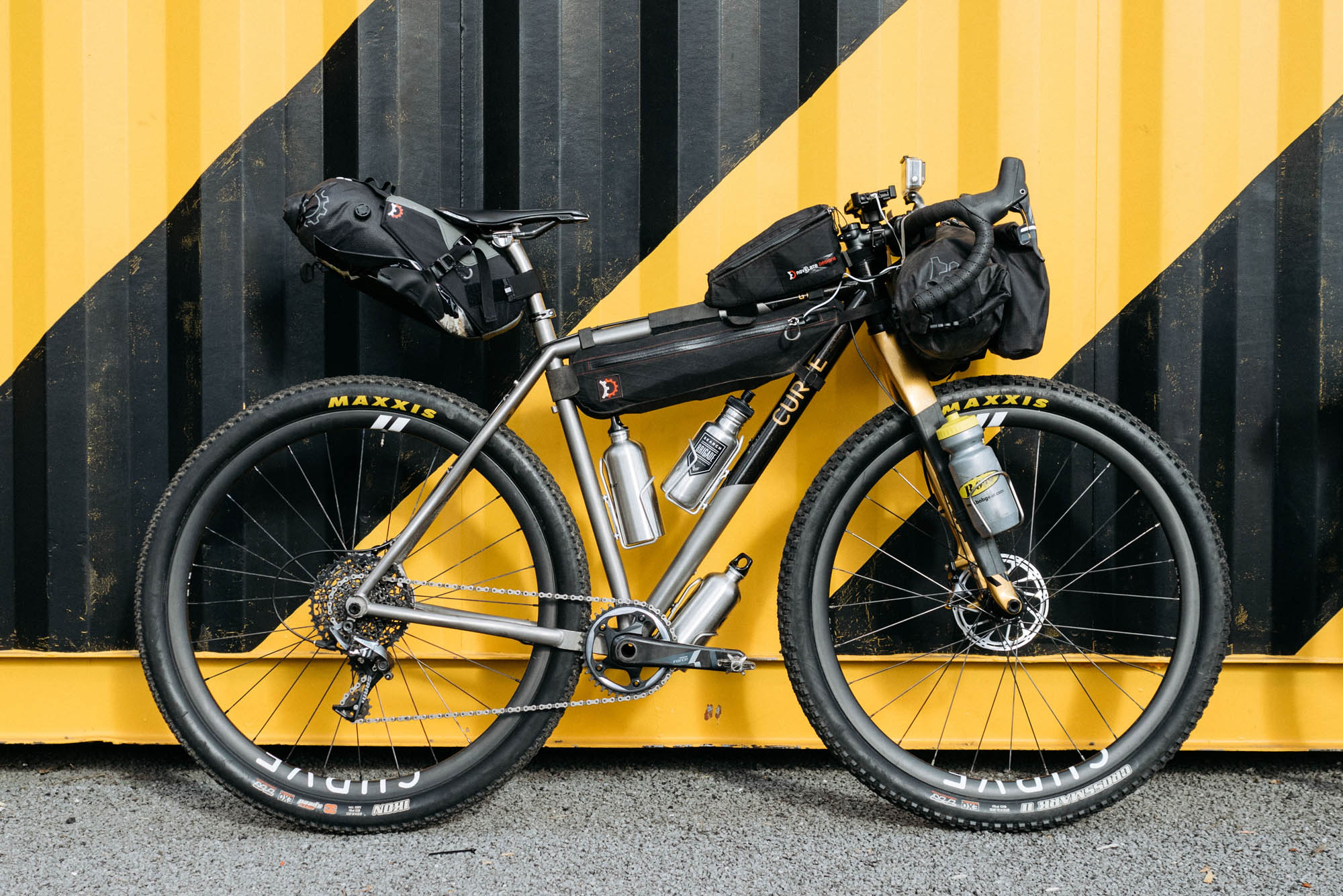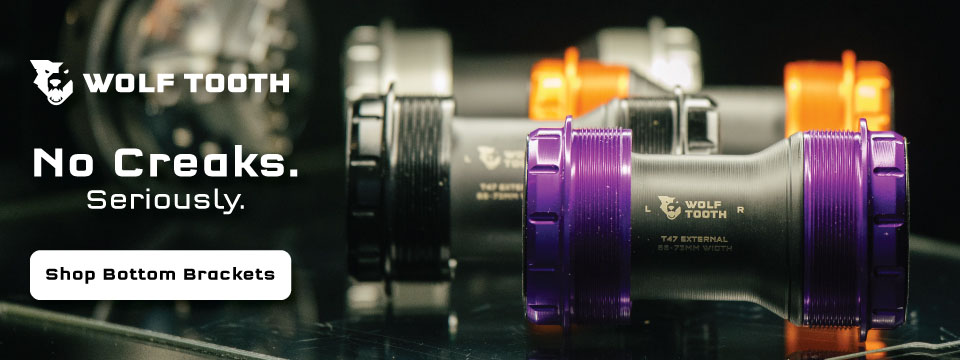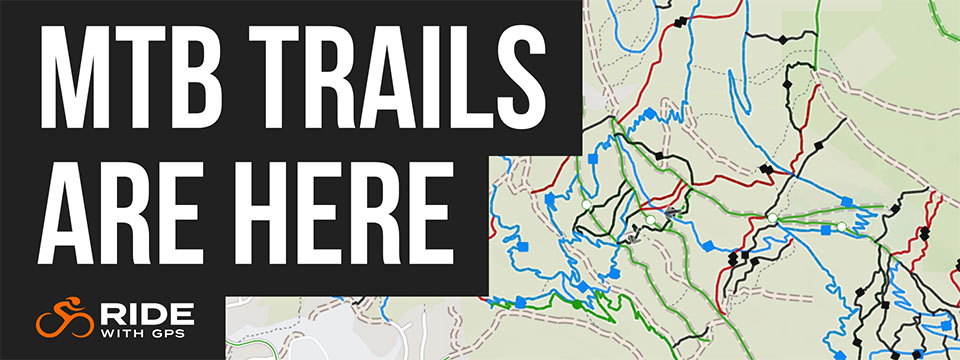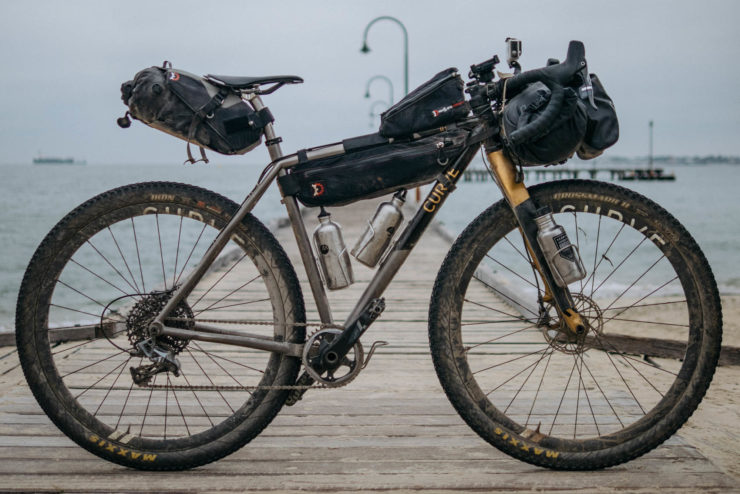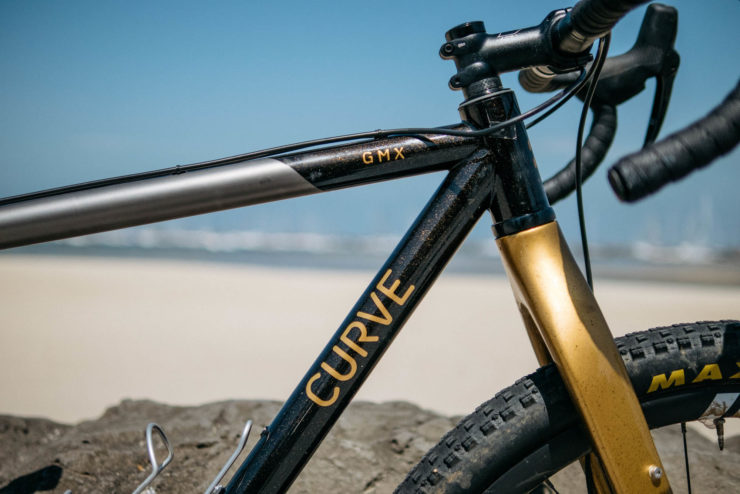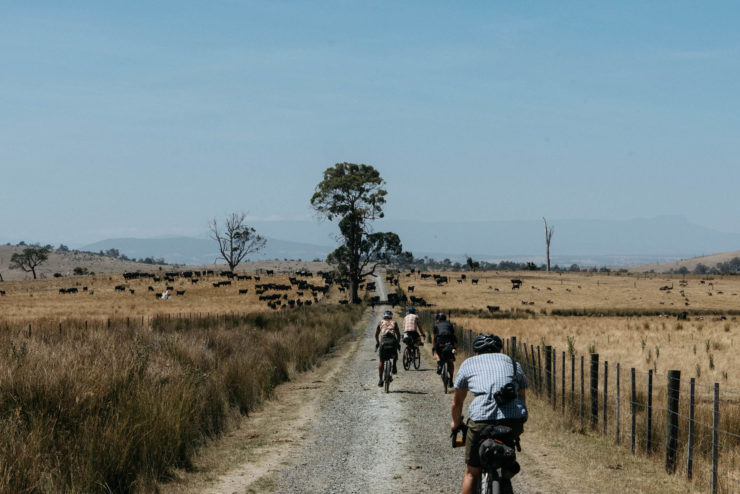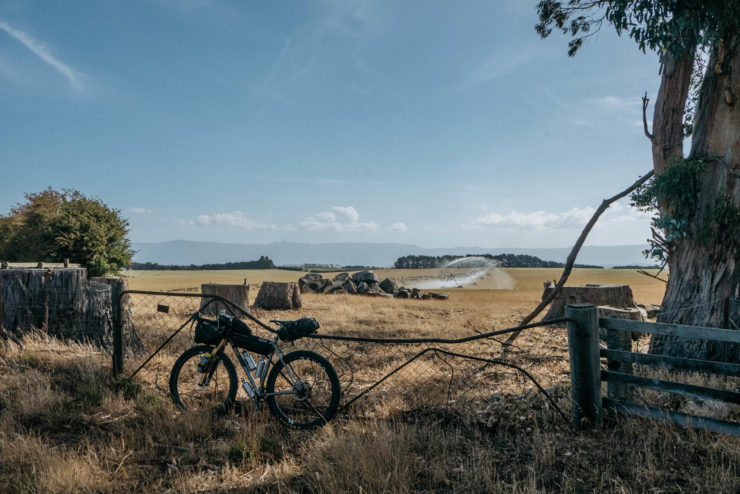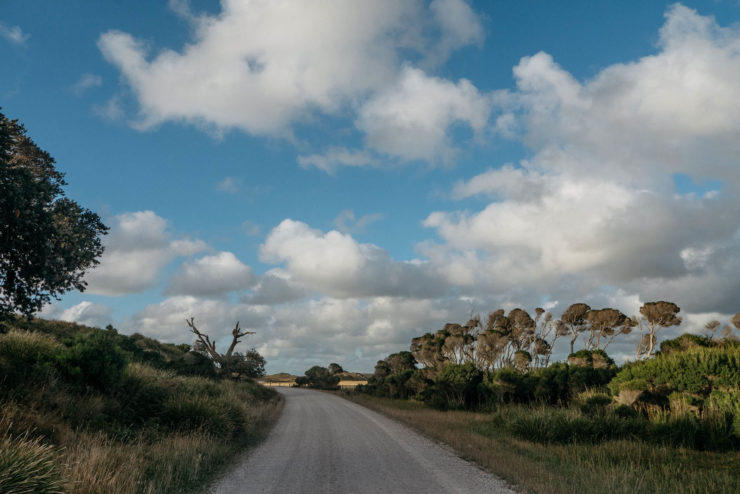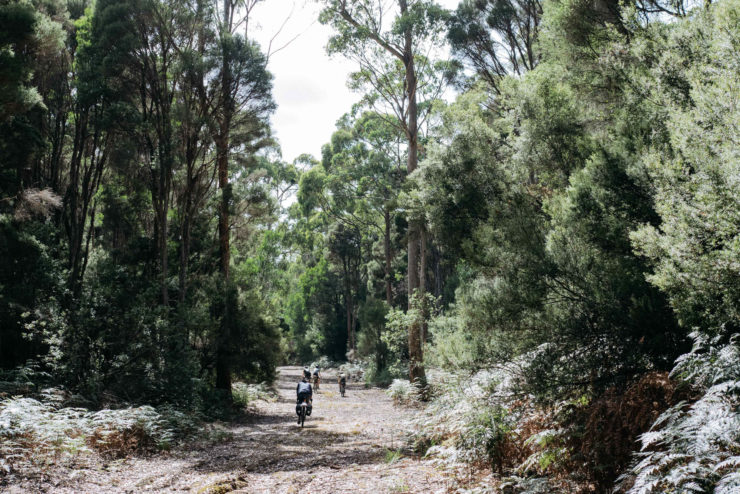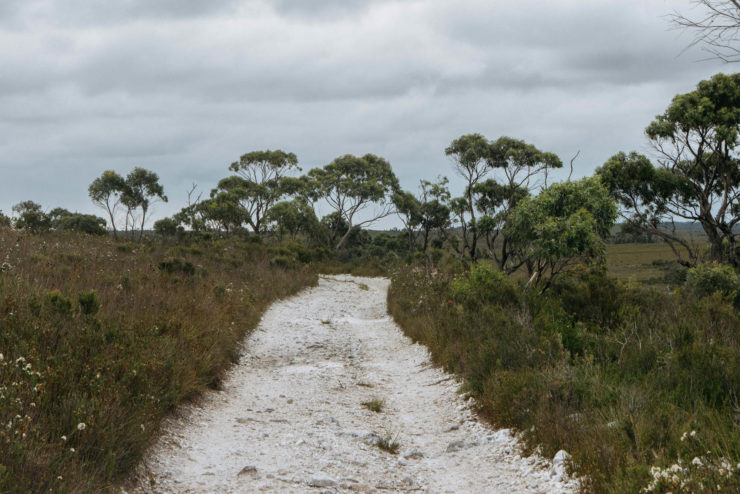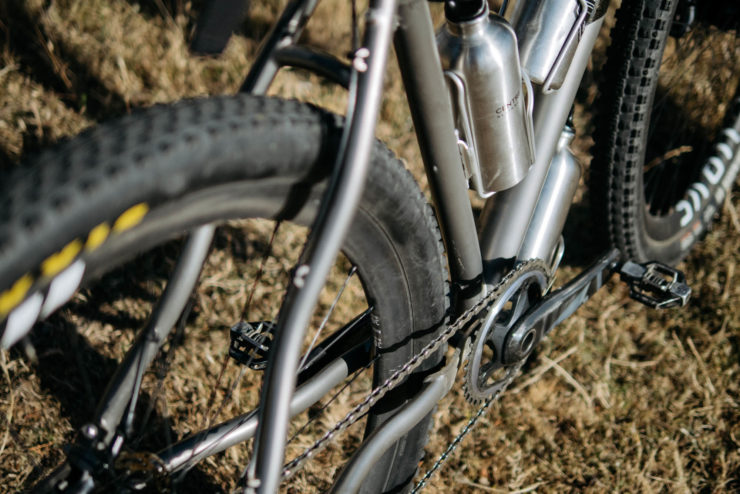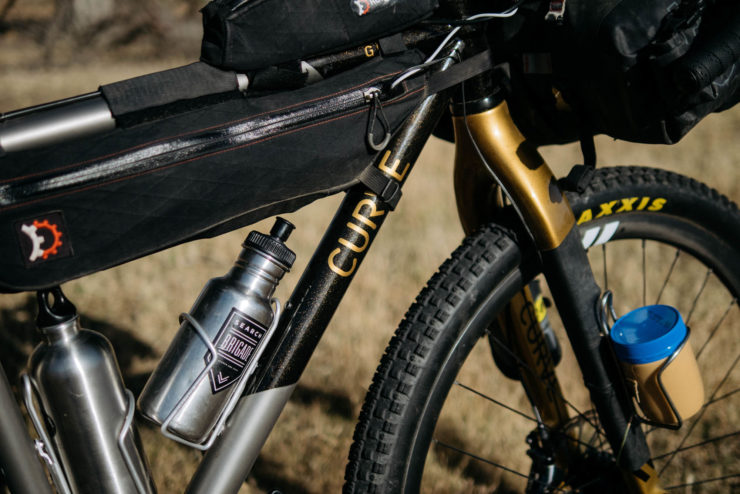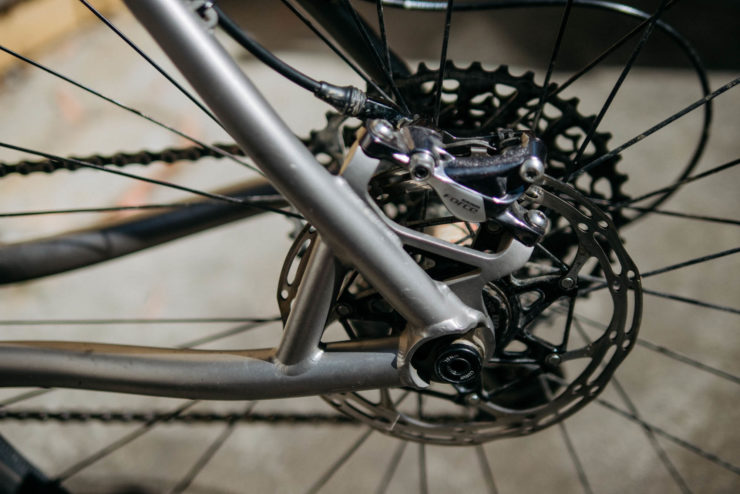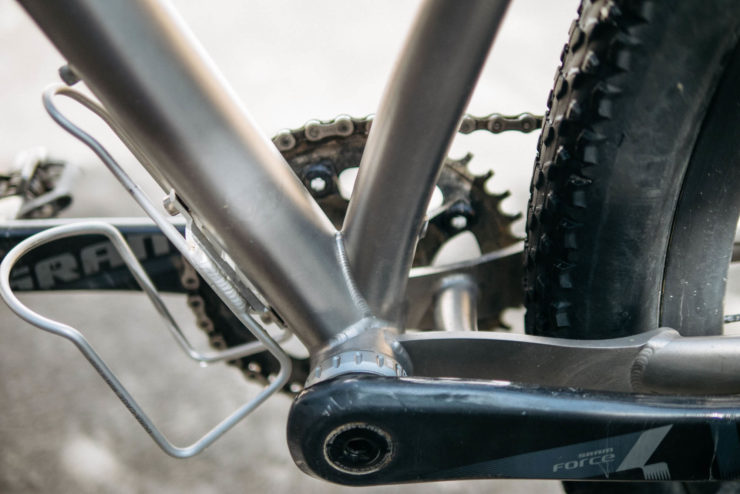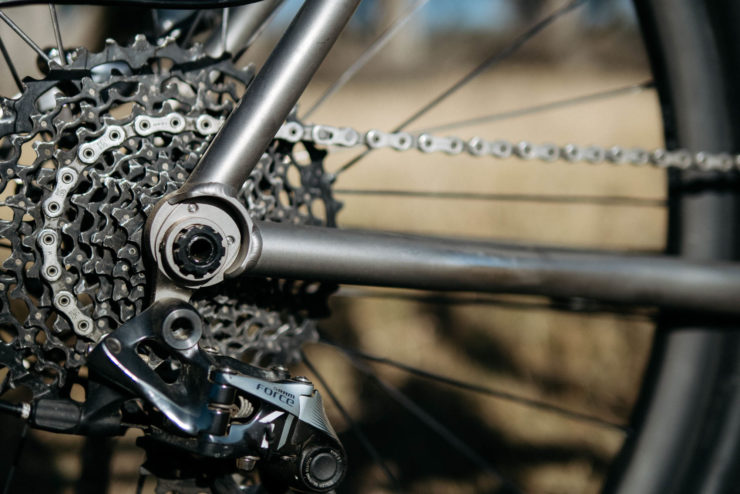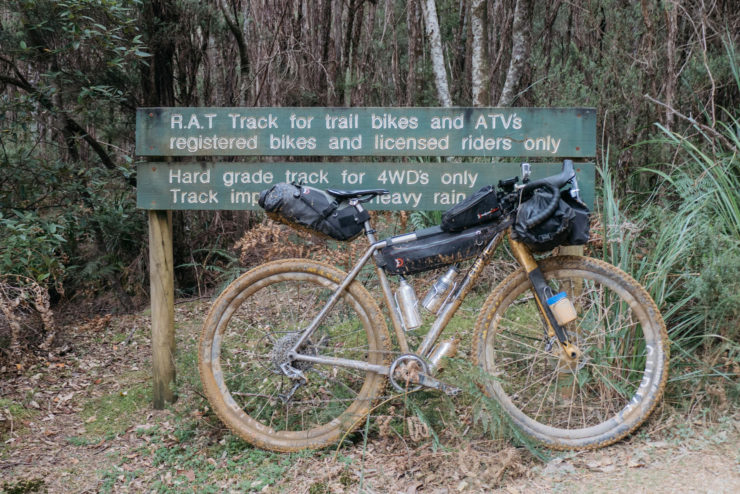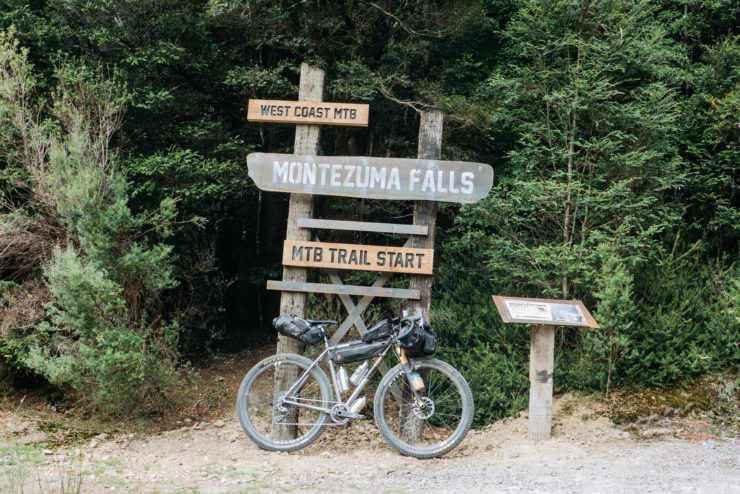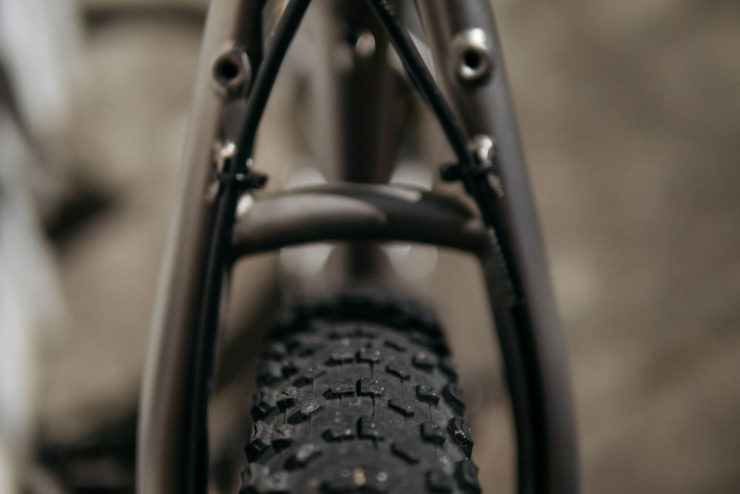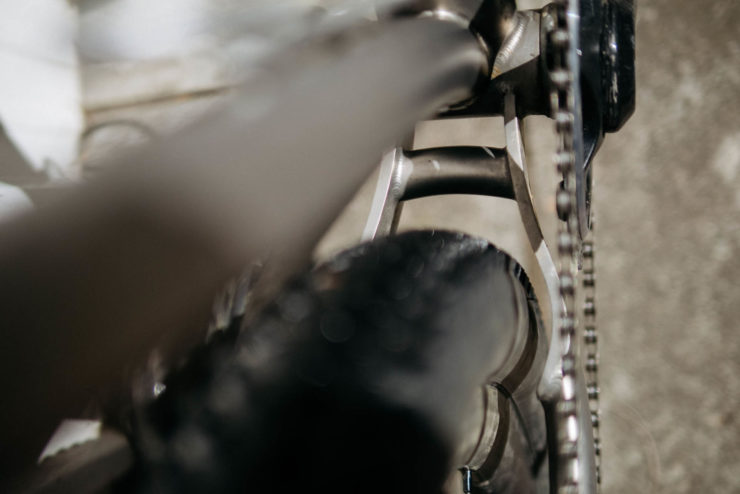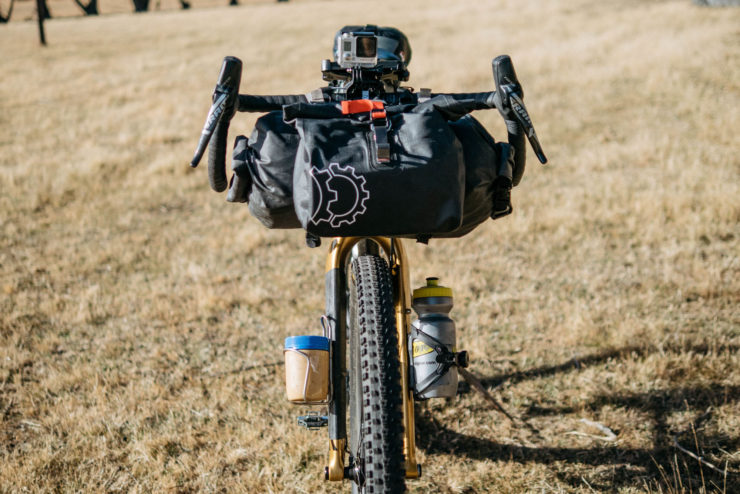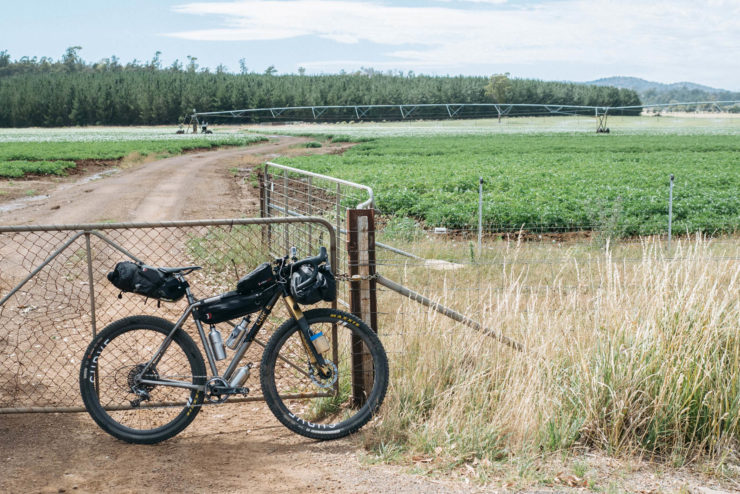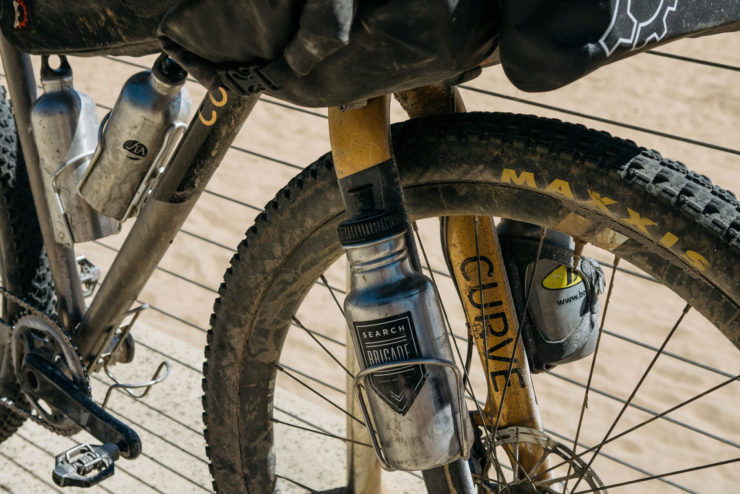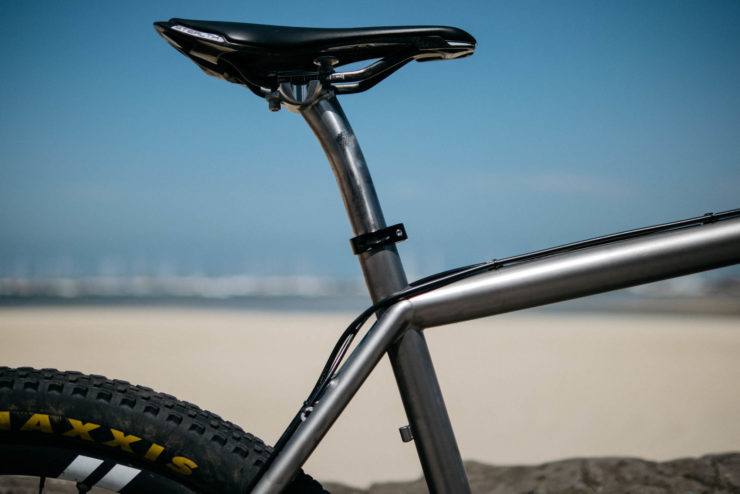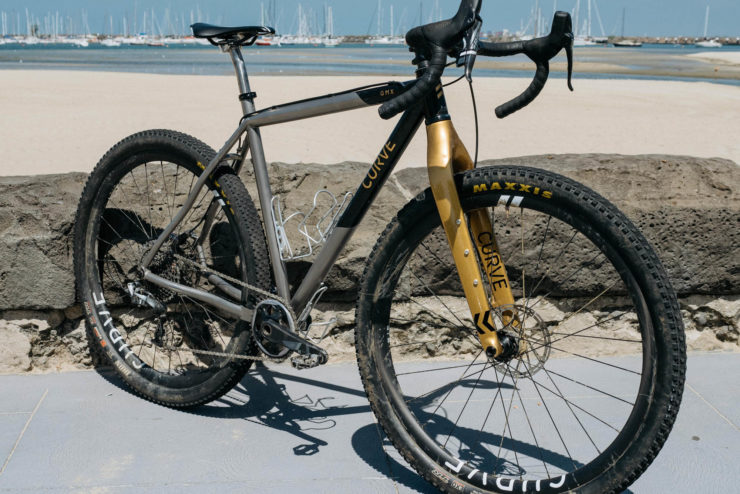Curve GMX Review: Undauntable
There are only a handful of bikes that suitably blend drop handlebars with 29er mountain bike tires. And just a couple that do it well. Joe Cruz tested the Curve GMX while on a 10-day bikepacking trip through Tasmania to see if it was one of them…
PUBLISHED Apr 18, 2018
Putting drop bars on a 29er tries to achieve the vision of a bike that combines the trail prowess and confidence of 700c knobbies with a fast roadie position for spinning through smooth dirt and asphalt kilometers. Alas, were the world so simple. Anyone who’s tried to put drop bars on their old mountain bike—I count myself in this starry eyed group—has discovered that it’s frustratingly hard to get right. The best case scenario is one where, after trying a bunch of different stems to bring the bars closer and higher but then a little lower, then not so close, the bike functions fine though well short of great, and looks like a mess. Your 29er was probably designed to have those original riser bars after all.
Enter Curve. The Curve GMX is an impressive realization of the hopeful fantasy. It is a drop bar 29er that’s supremely capable and makes you feel like you can ride it anywhere. It’s so incredibly good at its niche that it might well transcend it, by which I mean that this is a bike to covet no matter what kind of riding you mostly do.
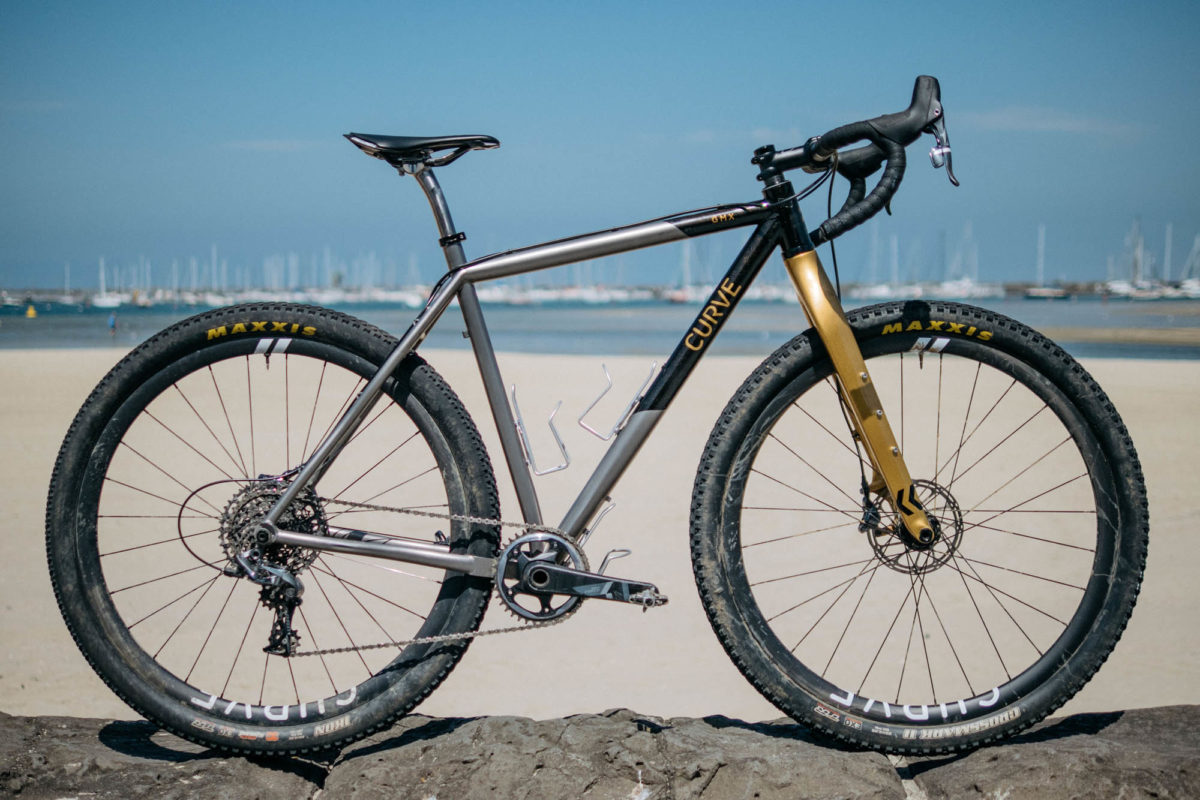
- Highlights
- Angles (MD): 71.5° Head tube, 73.5° Seat tube
- Stack/Reach (MD): 621mm/386mm
- BB Drop/Chainstay: 72mm/440mm
- Bottom Bracket: Threaded 68mm BSA
- Hub specs: 12 x 142 rear
- Seatpost Diameter: 27.2mm
- Max tire size: 29 x 2.4″
- Price (frame): $3,790 AUD / ~$2,950 US
DESIGN MANDATE
Curve Cycling is an Australian company HQ’d in Melbourne. The ideas and attitude behind the brand go back to a collaboration between designer and engineer Steve Varga and ultra-endurance racer and Trans Am ‘15 winner (and Physics PhD) Jesse Carlsson. They are proud that they’ve realized their goal to make bikes for fast, big adventures in remote places. Curve has no shortage of credibility on this front, as their designs are also ridden by Sarah Hammond, record holder and twice winner of Race to the Rock.
The GMX—Jesse’s baby, according to Varga—is the result of an interplay between designer, racer, and lunatic “let’s design a bike that is unstoppable” imagination. The team knew they wanted a modern drop bar 29er and they got empirical by prototyping geometries and materials, and mashing together figures to get it to work. The result, driven by function and inspiration, features an enormous main triangle, short chainstays, and subtle bends.
The GMX’s specific niche is the sort of off-road adventure where a cross bike is not enough, but where a rider still wants a road position on a platform that is as capable as any hardtail or fully rigid mountain bike. To be clear, the idea was not to mount a drop bar high so that the main position is in the hooks. By design, the GMX places the bars so that the classic roadie positions are the main ones, where one rides mostly on the hoods but with the tops and hooks accessible and comfortable.
IMPRESSIONS
I rode the GMX during Search and State‘s Search Brigade, a ten-day, all-conditions summer bikepacking trip in Tasmania. We faced rolling dirt roads, crazy steep pitches, sand to granite riding, and landscapes that were somehow both tropical and alpine. I was bowled over by the GMX’s versatility. I could come off of smooth gravel and accelerate onto rough jeep track without hesitation or doubt. I could skip left right left across ruts on a crater-marked descent in the drops. I could put my head down and spool up kilometers of asphalt. We traversed singletrack and I was by far on the most handy rig. It’s mud capable with ample clearance. Broken terrain—textures that are committal but where you’re not necessarily craving a dual suspension setup—is natural and familiar.
The GMX certainly has racing in its DNA. The feel is just what I like on my go-fast bikes in that it loves most of all hauling ass in straight lines, its instinct is to understeer a little, but it carves well after some assertive input and muscle. It’s a bike that is easy to relax into while going hard, as it doesn’t need constant small feedback, which can accumulate fatigue over a day. But this is all achieved with a relatively short wheelbase, so there’s no sense of dragging a long bike around corners.
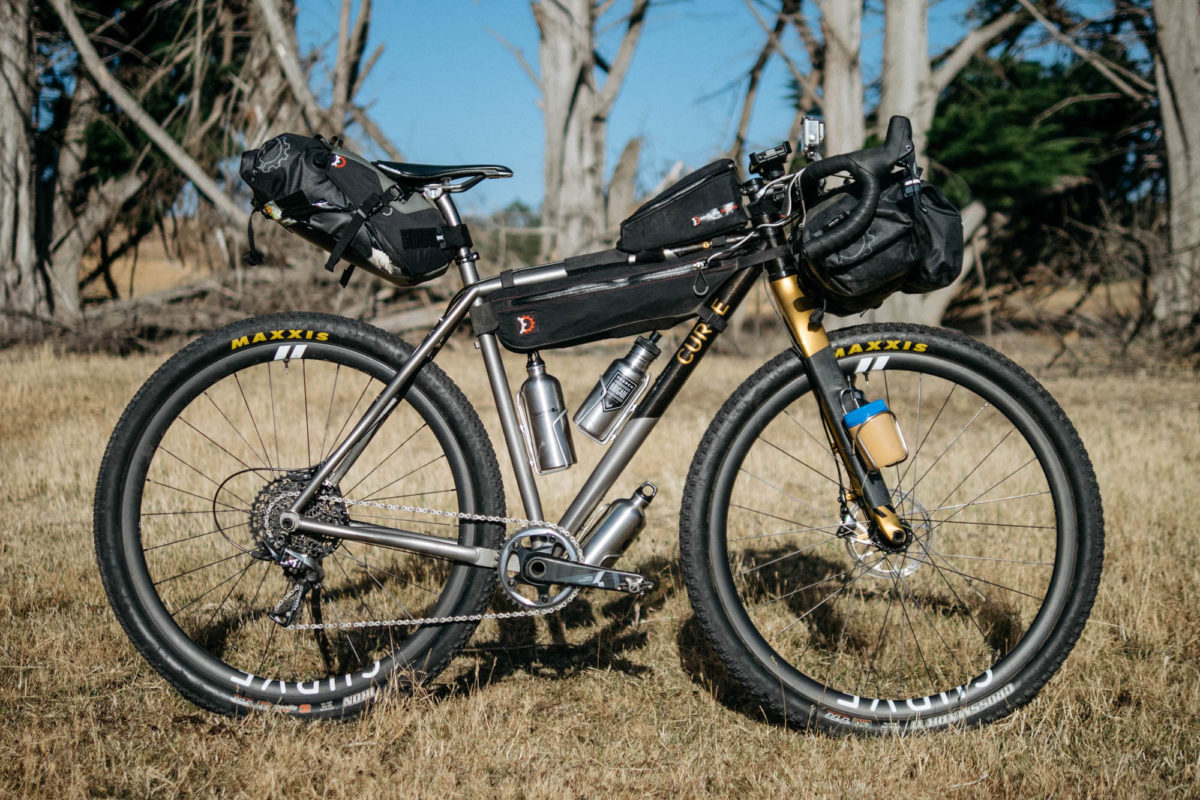
So, is it the fantasy drop bar mountain bike? I’d say largely yes. The GMX isn’t a gravel bike as we’ve come to understand the category, as it is much further along in the direction of a mountain bike (Curve’s GXR is squarely a gravel bike). I could ride the GMX on 90% of the terrain that I ride my personal riser bar fully rigid 29er, and the remaining 10% owes only to the fact that there are some leverage and balance situations where my technique comes from decades of familiarity with flat bar mountain biking. Just as hoped, the drop bars were an advantage over a 29er when trying to achieve speed on dirt roads. Of course, it’s not as fast as a gravel or cross bike with narrower rubber, but the tires are the bulk of the explanation there, not the geometry or configuration of the bike. Curve reports that the GMX is more than a day faster than anything else over Australia’s longest purpose built mountain bike track, the 1,100km Munda Biddi Trail. It also has the fastest known time on the Mawson Trail, a 900km remote off-road touring route in South Australia. Those kudos are a credit to the riders, but the bike didn’t hold them back. The GMX seems damn well perfect for events like the USA’s Crusher in the Tushar or this summer’s Silk Road Mountain Race in Kyrgyzstan, not to mention the Tour Divide.
To achieve clearance for the big wheels and a suspension corrected fork, the GMX has to be tall. Very tall. For reference, the size medium I was riding has a 621mm stack height. As I pedaled alongside one of my most familiar riding companions, we laughed when we realized that my shoulders and chin were higher than his for the first time in 20 years of riding together. He’s 8 inches (20cm) taller than I am. In order for me to mirror my usual gravel bike position, I would have had to put on a -17 degree stem. Though it is exciting for a small rider like me to contemplate a World Tour peloton negative rise cockpit, it does reveal that the GMX is flat out freakishly proportioned compared to typical drop bar platforms. This translated into little standover room, even with my unusually long inseam (31”/79cm) for my height. Honestly, I didn’t find any of this to be a big deal, but if you trend toward a long arm/short inseam build, it could be a problem. And if you’re used to getting a fantastic draft behind others, more of you is going to be up in the wind on the GMX. On the other hand, the height doesn’t make it feel it in any way precarious or unstable. Very much to the contrary, there is a planted, foundational quality to its ride.
We can still ask whether there’s a point in having that suspension corrected rigid fork. I wouldn’t put a suspension fork on this bike because much of the rocket ship lift off feeling I get from the GMX is from its light weight and the pinpoint precision steering. For the kind of riding I do, I want zero wallow and I don’t want to have to fool with preloading the front end to get over obstacles, the dynamics of which change somewhat when there’s a front roll on the bars. But of course you may be of a different view on all that. The GMXs I’ve seen with suspension forks like the 100mm travel Fox 32 Float definitely look like they mean business. Ryan “Rhino” Flinn, Curve’s ambassador, company comic, and brand outreach guy, sometimes outfits his this way.
A potentially more irritating issue is minor toe overlap, which I experienced with my relatively small feet (9US) and the 2.1 Crossmark tire in the front. Many people don’t care or much notice toe overlap after a few rides, and the drop bar attitude of the GMX means that one is not likely to be on very low speed, hop-and-meander trail rides where it would be a meaningful issue. But it’s one of my cavils and is my most serious reservation about the bike. I was going to bring it up with Curve when we debriefed, but they preempted the discussion by volunteering that they’re working on a refresh of the bike that will achieve the same ride feel without toe overlap.
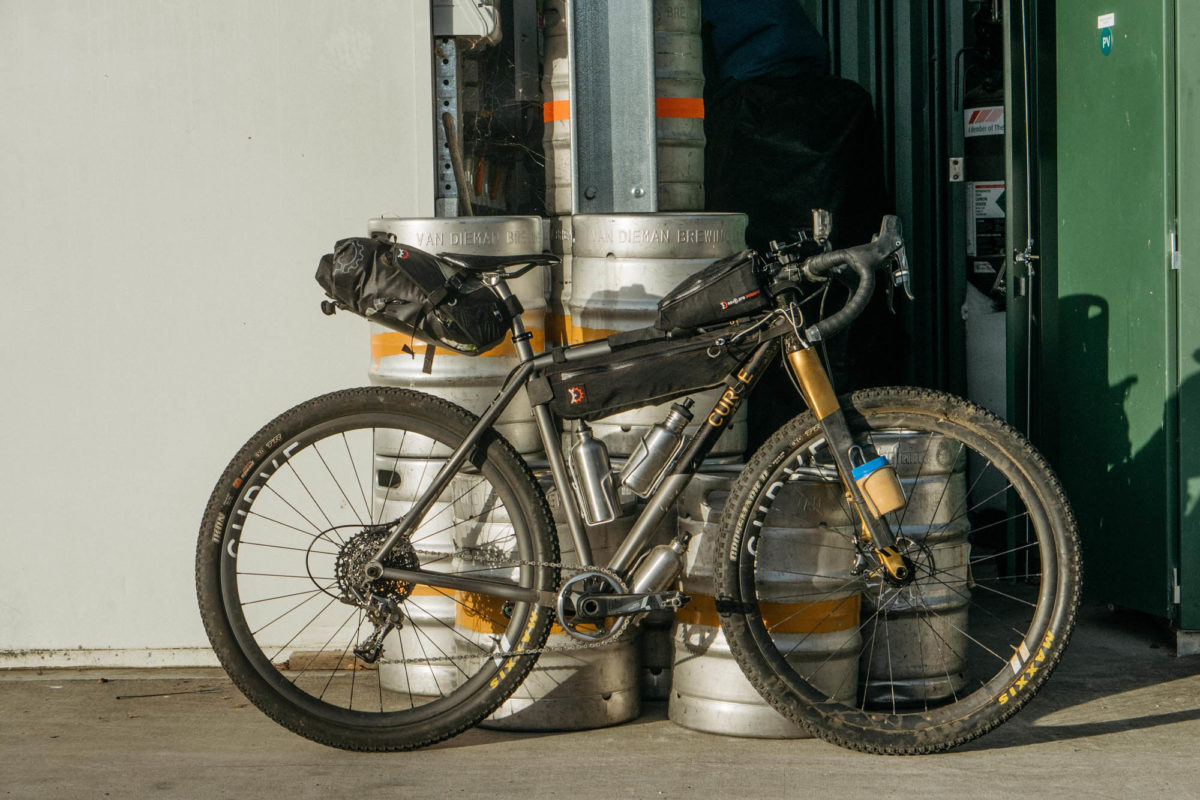
Speaking of update, Curve reports that they’ve been otherwise very pleased with the bike which is welded in a Taiwanese factory that they’ve had a relationship with for all four years of Curve’s existence. Evidently there’s been only one crack on a production frame ever, a statistic that Varga says owes to the fact that Jesse Carlsson sets out to break prototypes.
Curve says they produce titanium bikes because they can easily achieve the harmonics and resonance they are after without being concerned about carbon’s fatigue. From an engineering perspective, it is obvious what to do with titanium tube sizes and bends to achieve the functional outcome one is aiming for. Finally, it’s aesthetically appealing without requiring much intervention or upkeep to make it look great. I can report that the welds on the GMX looked very steady and, overall, this bike looks sharp to me. Readers of this site will know that I’m a fan of titanium.
BIKEPACKING ANYWHERE
Putting aside racing, what kind of bikepacking rig does the GMX make? Well, to my way of thinking, all the things that make it a great race bike—lightness and speed, straight line stability, unflappability in rough terrain—are pluses for bikepacking. A nice build will mean a feathery base weight, and, if you travel light, the whole package is extraordinary for going far.
If you’re trying to cover ground on your bikepacking trips, a drop bar 29er like the GMX will likely be a bit faster than a plus bike or a flat bar 29er. With respect to former, the tradeoff is with traction, and with respect to latter, it’s maybe with having more room to run a wider front roll.
The GMX has a standard bottle mount on the seat tube and triple sets above and below the downtube. Combined with triple mounts on both fork legs on the Curve carbon fork, that’s absolutely perfect for the kind of adventuring that is happening these days. Another notable pro-bikepacking feature is the aforementioned large main triangle for substantial capacity in a frame bag. Cabling runs above the top tube, so is out of the way of muck. In my experience with full cable housing, there’s no issue with the velcro straps of bikepacking bags wrapped around the cables and hydro hose. Rack and fender mounts and sliding dropouts are available for an upcharge, as is custom paint.
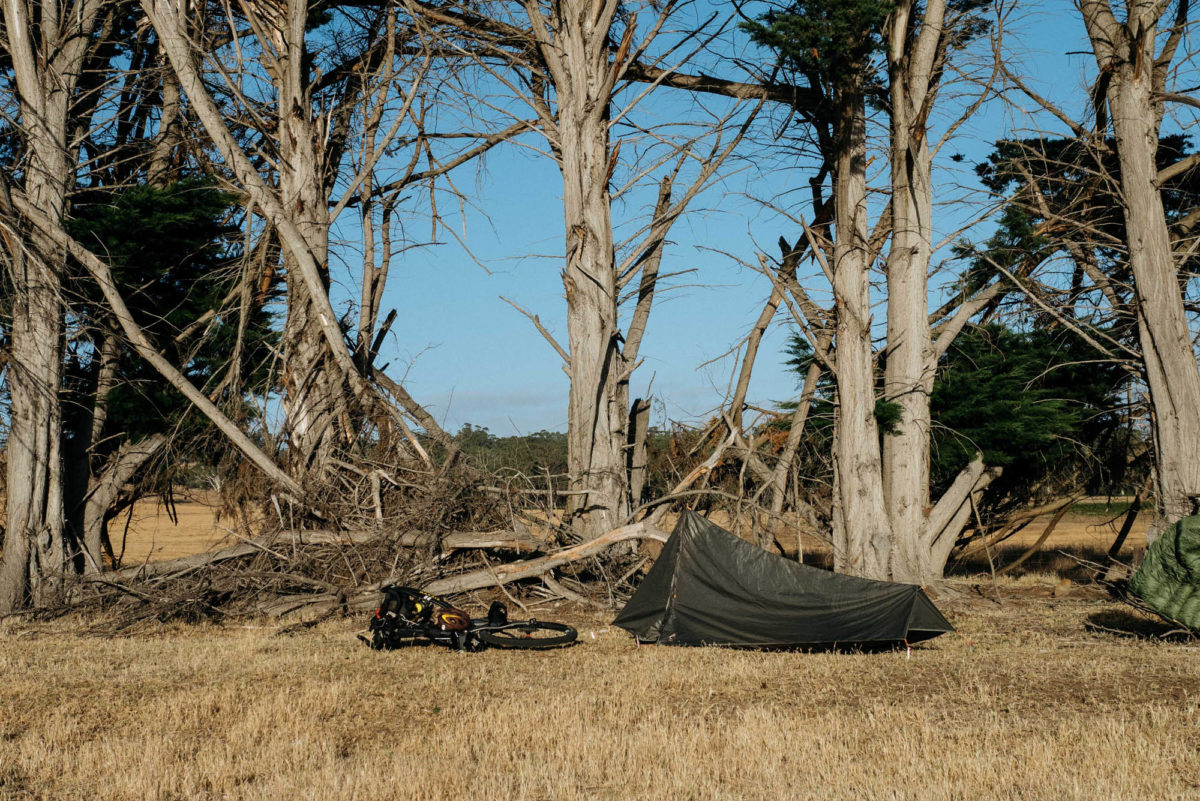
Build
- Frame Curve GMX titanium
- Fork Curve Carbon 29 BP
- Headset Curve semi-internal
- Rear Hub DT Swiss
- Front Hub SP PD8 Dyno-hub
- Rims Curve Carbon
- Spokes Sapim
- Tires Maxxis Crossmark/Ikon
- Bar Salsa Cowbell
- Stem Pro
- Post Titanium
- Saddle Pro Stealth
- Shifters SRAM Force 11
- Brakes SRAM Force 11
- Rotors 160mm
- Rear Derailleur SRAM Force 11
- Chain SRAM
- Cassette SRAM
- Crankset SRAM Force 1x 38t
- Bottom Bracket SRAM
Other Notes
The GMX is in the same category in terms of design goals as, say, Salsa’s Cutthroat, but the material and customizability make it distinctive, and there are enough differences in geometry to give it a different feel. For instance, the GMX has a shorter top tube, marginally shorter chainstays, and a 1.5 degree steeper headtube angle.
The price is what you’d expect for titanium welded in Taiwan. For comparison, the USA welded Moots Baxter run about US$1600 more with an Enve carbon fork. When I asked Varga about USA sales, he indicated that Curve wants to be really intentional about how they move into the USA market, where competition and expectations for packaging and customer experience are high. Thus, they are moving slowly and deliberately. Expect to see more Curves Stateside in the future.
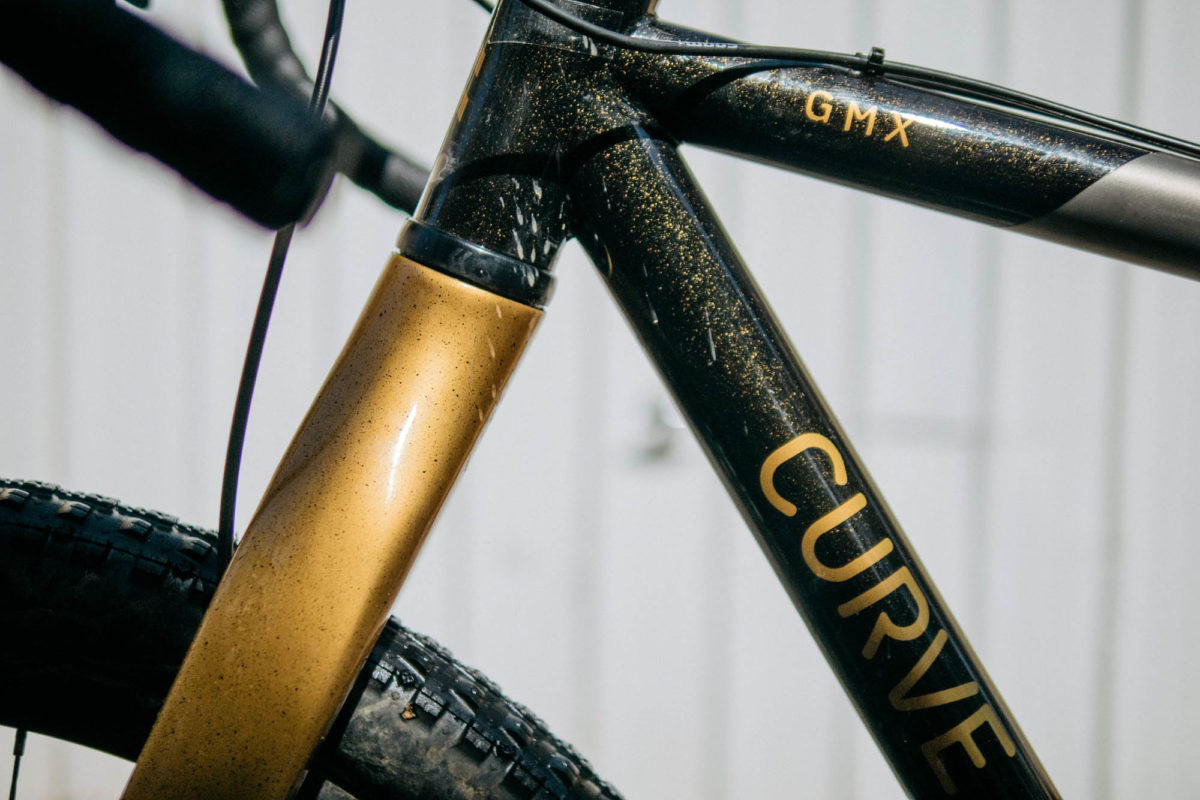
Pros
- As versatile and capable as any bike I’ve ever been on, ready for just about any bikepacking or adventure trip
- Ultra-endurance racing in its DNA
- Buildable into a superlight rig
Cons
- Very tall bicycle: standover clearance, drafting an issue
- Minor toe overlap with 2.1 tires
- Size Tested Medium
- Weight 1790gram for frame
- Price (frameset) $3,790 AUD / ~$2,950 US
- Place of Manufacture Taiwan
- Manufacturer’s Details CurveCycling.com.au
Wrap Up
On its terrain—anything short of the seriously technical—the GMX is unstoppable, and the percentage of performance it loses in other contexts is probably worth it. It’s not a road bike and it’s not even a fast gravel bike. You’ll find it too tall and sluggish if you only ever ride dirt roads. And maybe it lacks something in comfort compared to plus bikes. But the GMX wants to be ridden with the throttle wide open on a route that throws everything at you. Draw a line from a carbon fiber road bike to 45mm tire gravel bike to flat bar 29er hardtail to plus bike. The GMX is on the right half of that spectrum, but has an unusually deep overlap into the left. I count it as a true adventure platform, ridiculously capable and afraid of nothing.

Rider Profile
Joe is a philosophy professor and expedition cyclist. He took his first bikepacking trip in the late 80s and has since traveled the world on everything from a folding bike to a full suspension mountain bike to his now preferred titanium fat bike. Along the way he raced cross country mountain bikes—often singlespeed—on three continents. Recent trips include Croatia and Tasmania.
- Height: 5’8” (173cm)
- Weight: 149 lbs. (67.6kg)
- Inseam: 31” (79cm)
- Current Location: NYC / Southern Vermont
- Favorite Beer: Hill Farmstead Self-Reliance #2
- Favorite Route: Anywhere in Peru
Rhino at Curve Cycling loaned his personal GMX for this review.
Please keep the conversation civil, constructive, and inclusive, or your comment will be removed.







